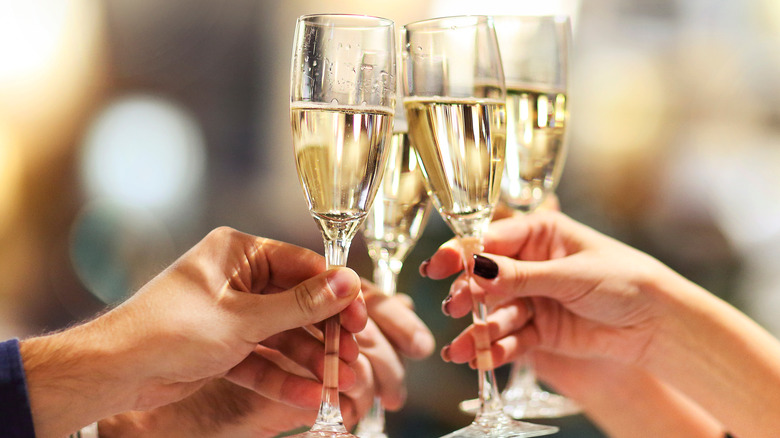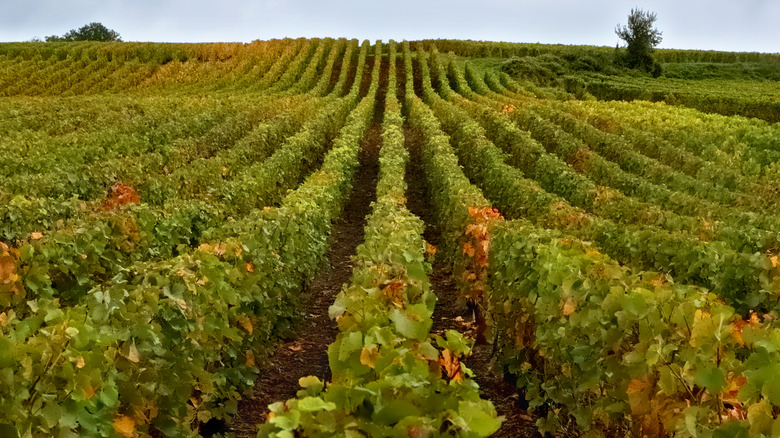Why Champagne Growers Decided To Modify This 100-Year-Old Rule
Even if you are the most devout Champagne lover, the chances are pretty good that you've probably never heard about a century-old growing rule for this type of wine, a rule that is now in the process of being modified, due to global warming. As it's commonly known, Champagne is a blend of Chardonnay, Pinot Noir, and Pinot Meunier grapes, all of which must be harvested from the Champagne region of France, per Wine Searcher.
Originally, according to Food & Wine, rows of vines were kept at a maximum of 5 feet away from one another, in order to preserve the quality of the grapes. Because, it's rationalized, if the plants were spaced out any further, they wouldn't need to compete for water and nutrients, resulting in grapes that were of lower quality.
But it was recently found that this distance is not necessary, and that lower density vineyards (up to 7 feet distance) were actually more eco-friendly, and could be utilized without sacrificing the Champagne's quality. Specifically, there is the potential that this switch would even lower greenhouse gasses by 20%, according to the Syndicat General des Vignerons de la Champagne (SGV).
What this revised rule means for Champagne tradition
Climate change really is the primary reason driving this change in distancing rules behind growing grapes for Champagne. However, as stated before, the current rule of a 5-foot limit between vine rows has been the tradition for generations, and farmers will have the option to adhere to the previous distancing requirement, if they choose. Food & Wine states that a potential worry of modernizing traditional vineyards, which will require more technology, might take away work from laborers in the industry.
But it is also important to note that SGV's president, Maxime Toubart, specified that this new rule can be used as a tool in order for Champagne vines to adapt to climate change, while also producing economic and environmental benefits. "The aim is to accompany the necessary agro-ecological transition by adapting Champagne vines to climate change, while at the same time preserving the quality and unique quality of Champagne vines, and the economic sustainability of wine growers," they were quoted in statement supplied to the magazine.
However, this transition will not be immediate. Food & Wine estimates this change will happen over the course of one, two, or even three generations. Likewise, France's National Institute of Origin and Quality (INAO) still needs to approve these laws, which have yet to be made official.

